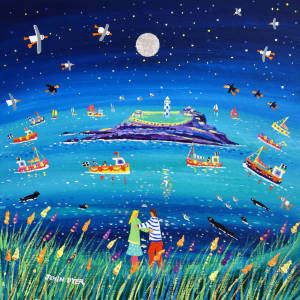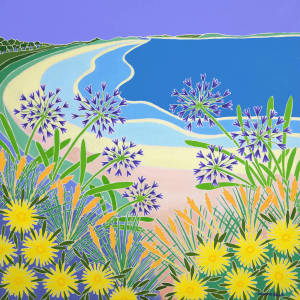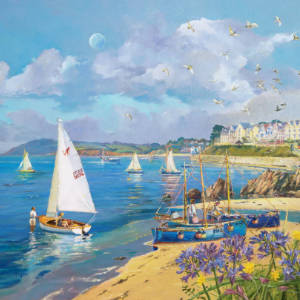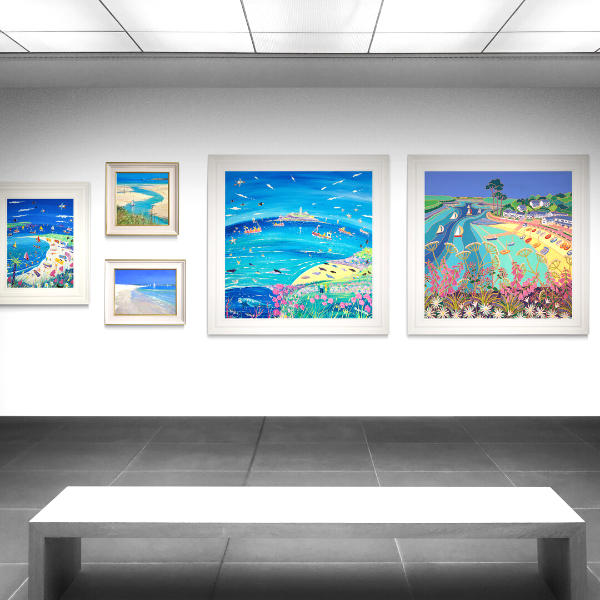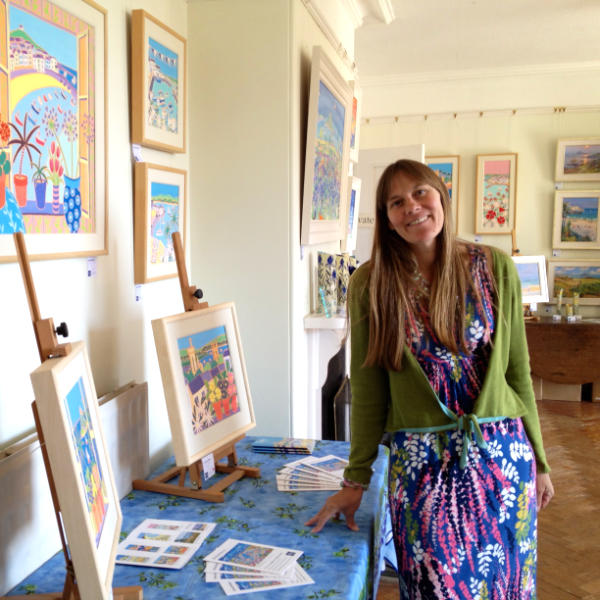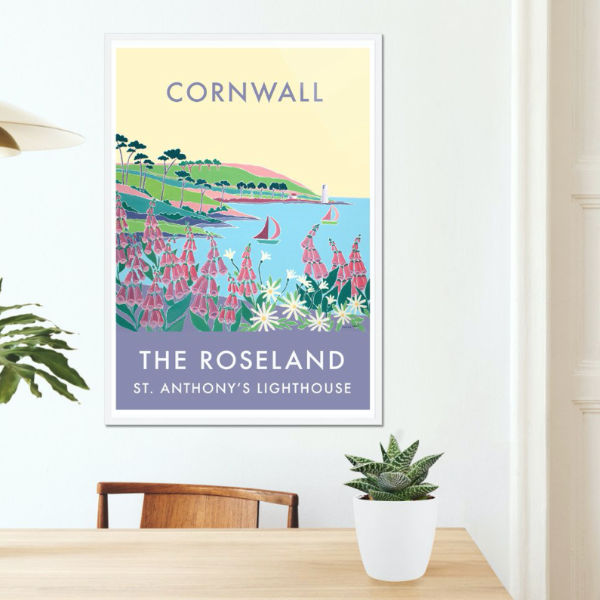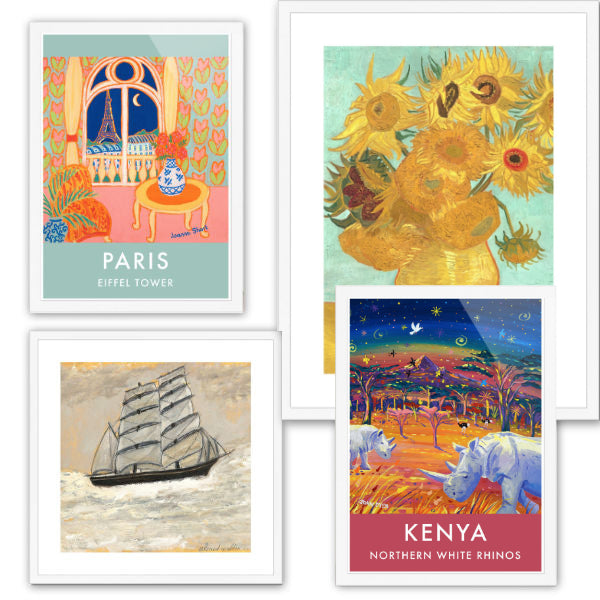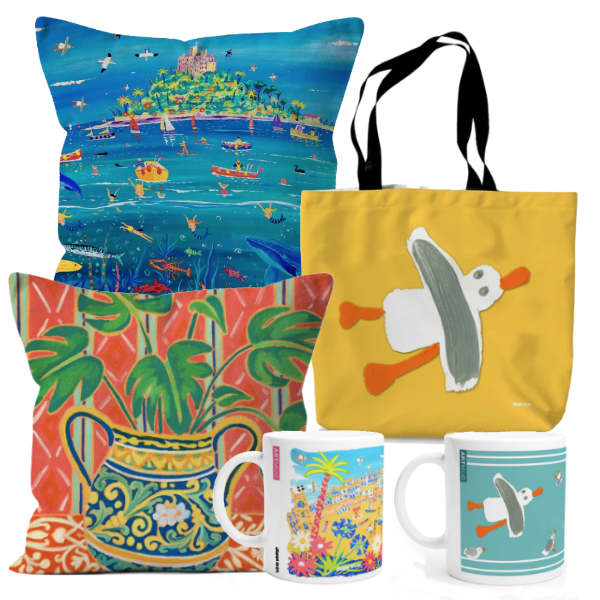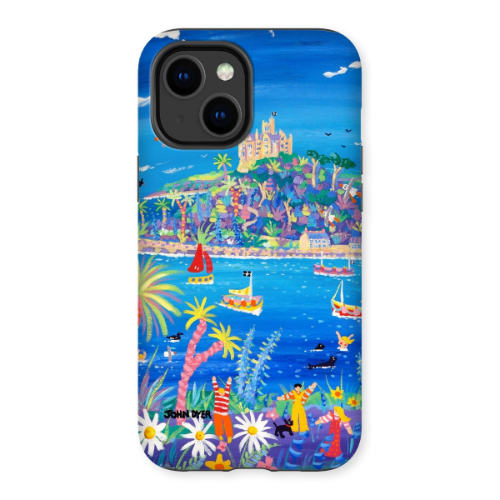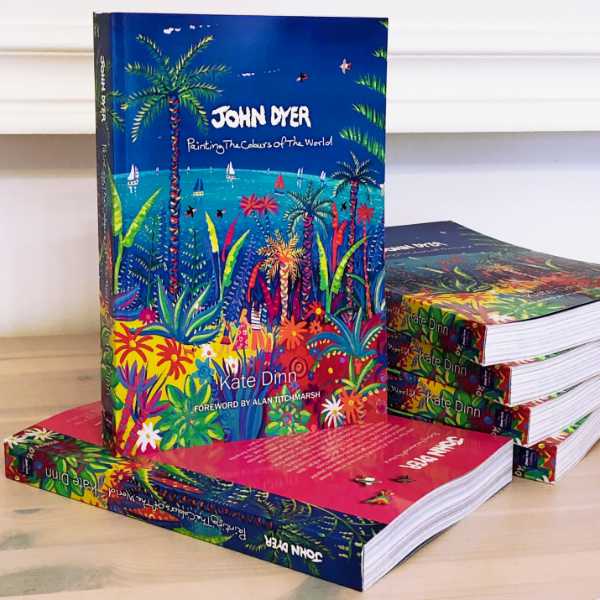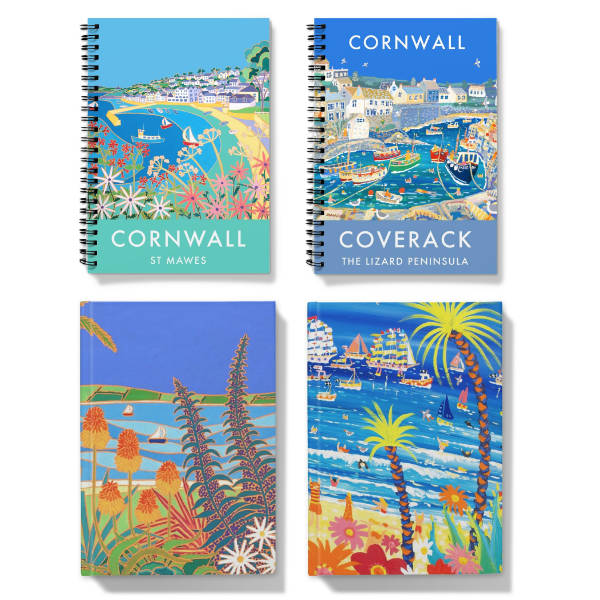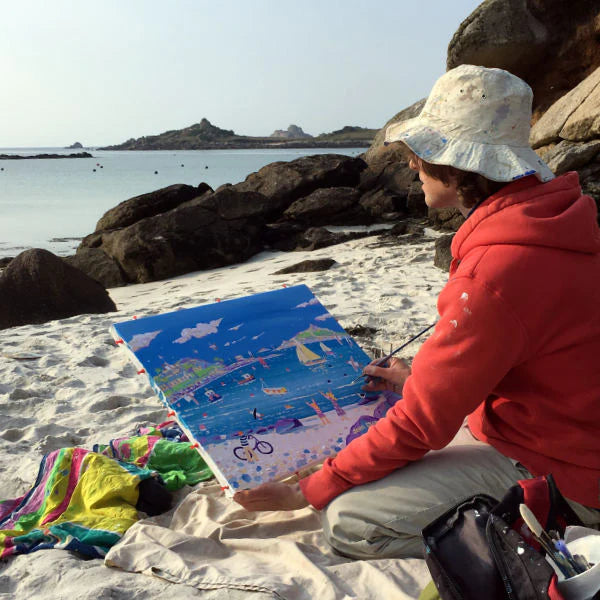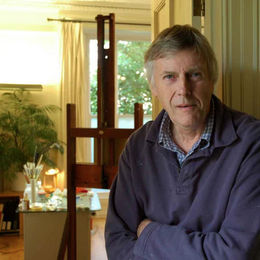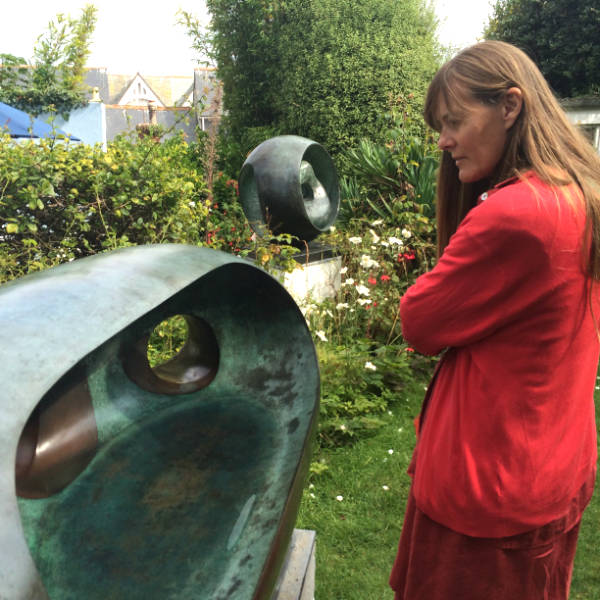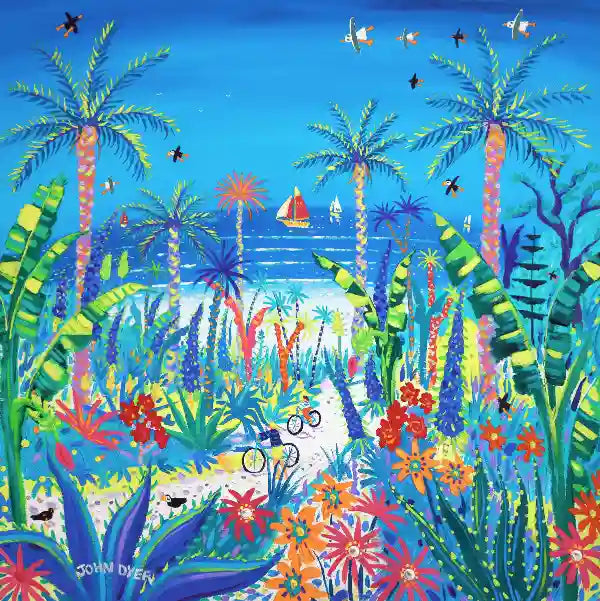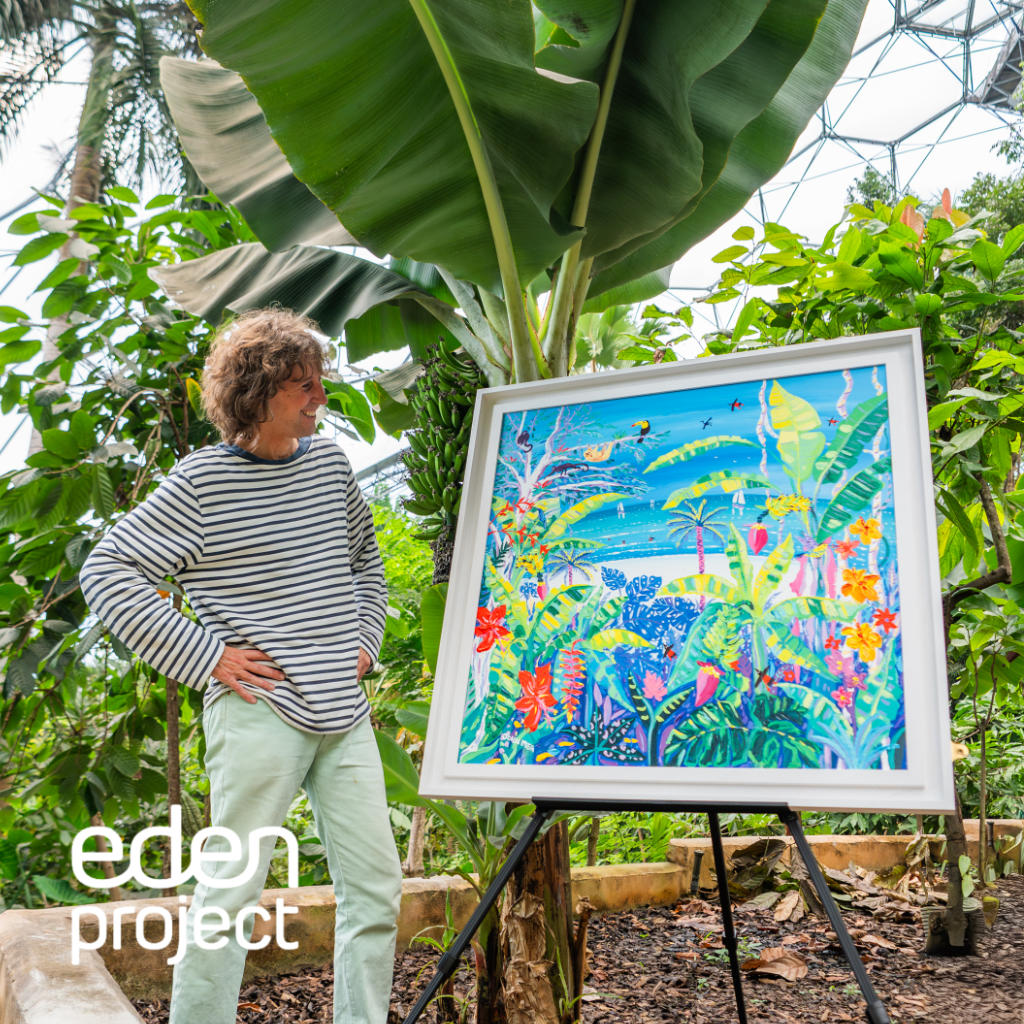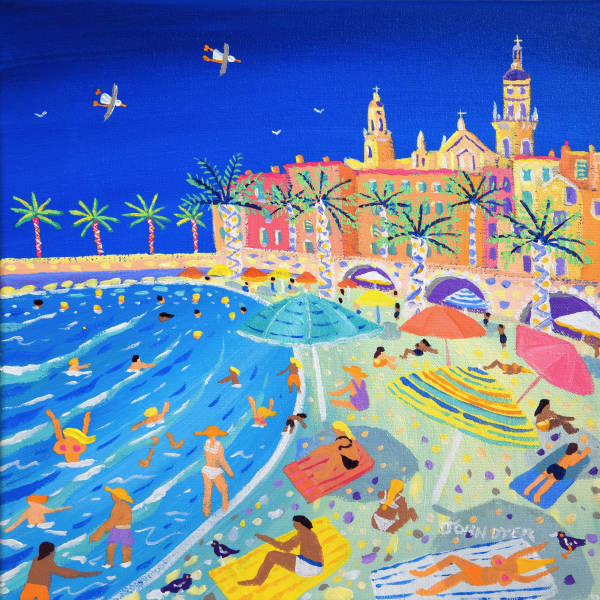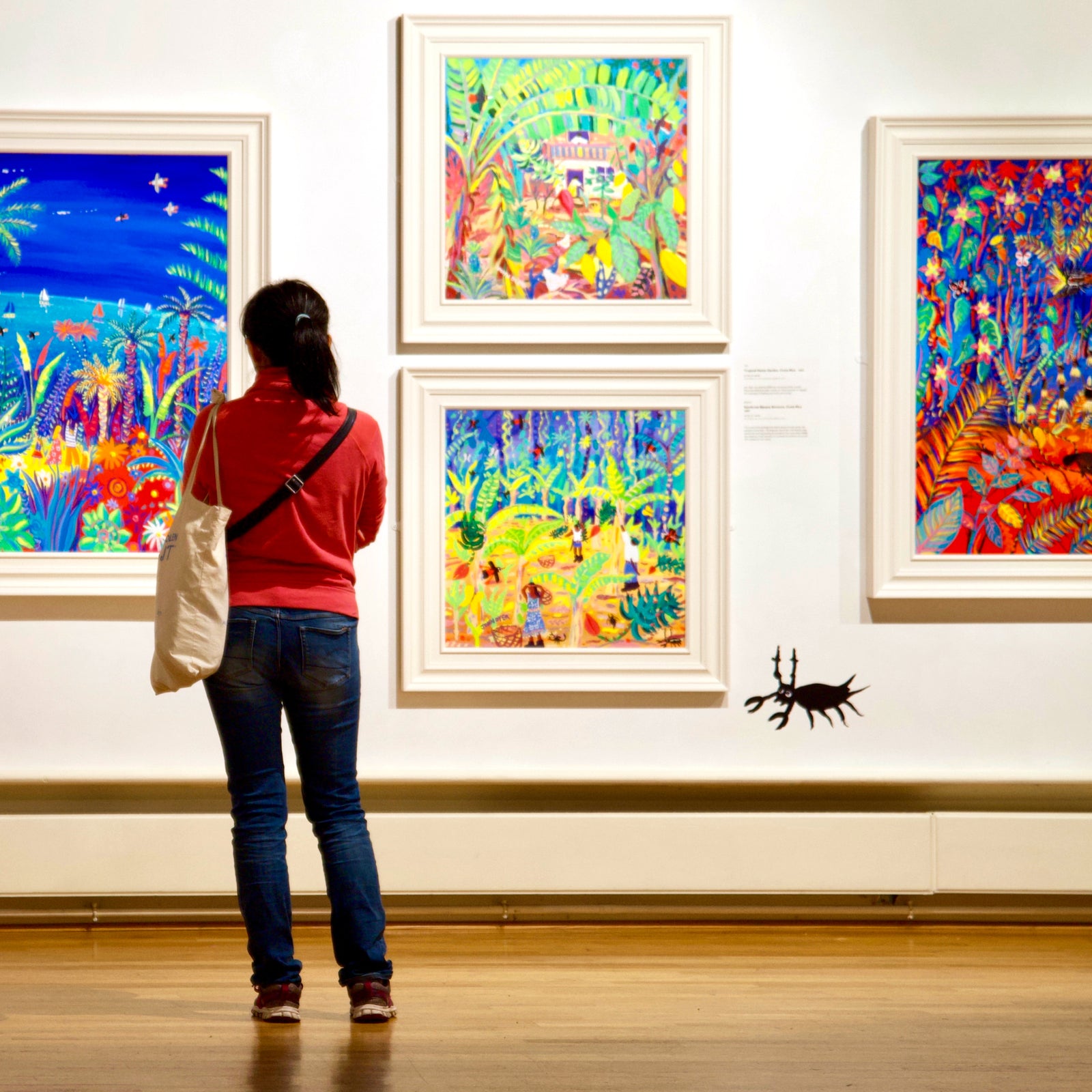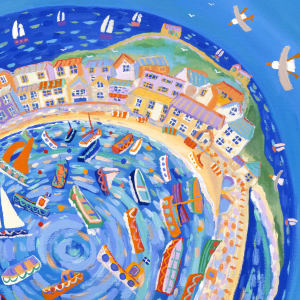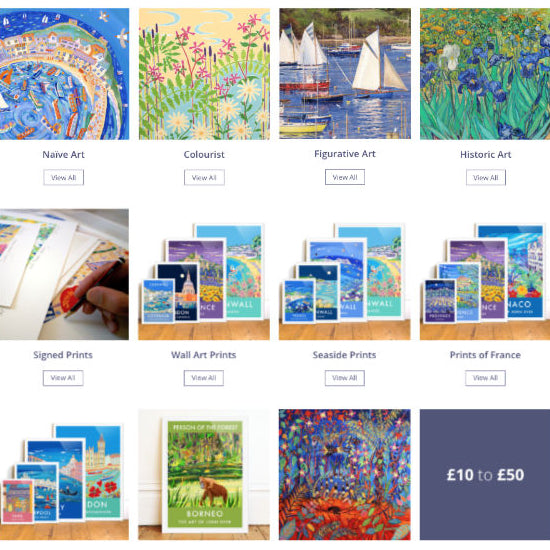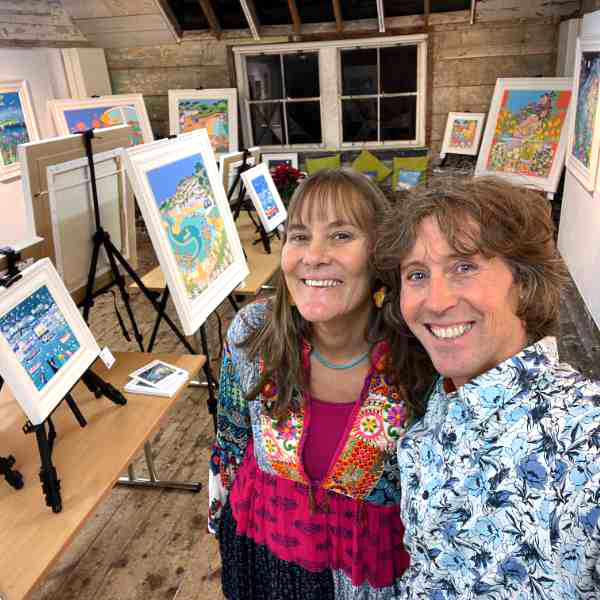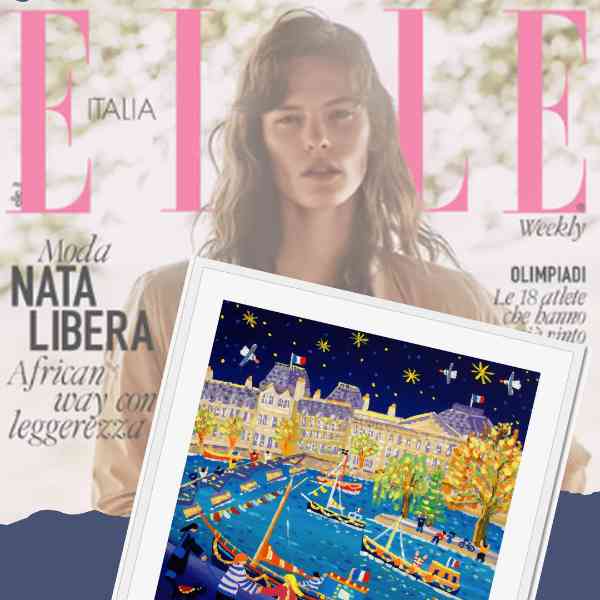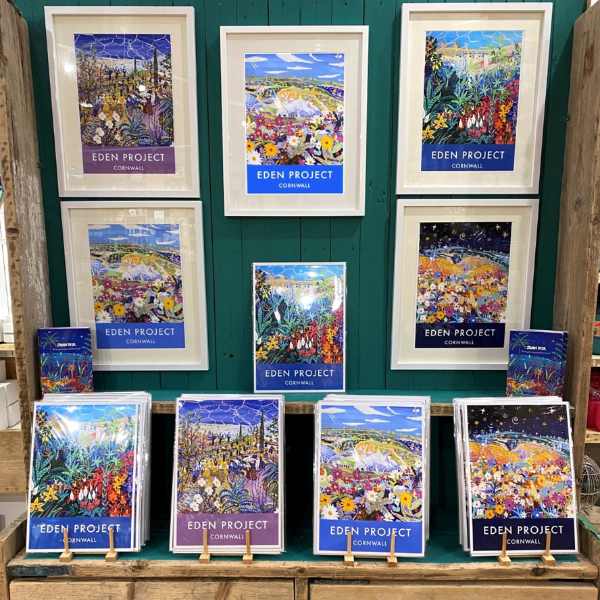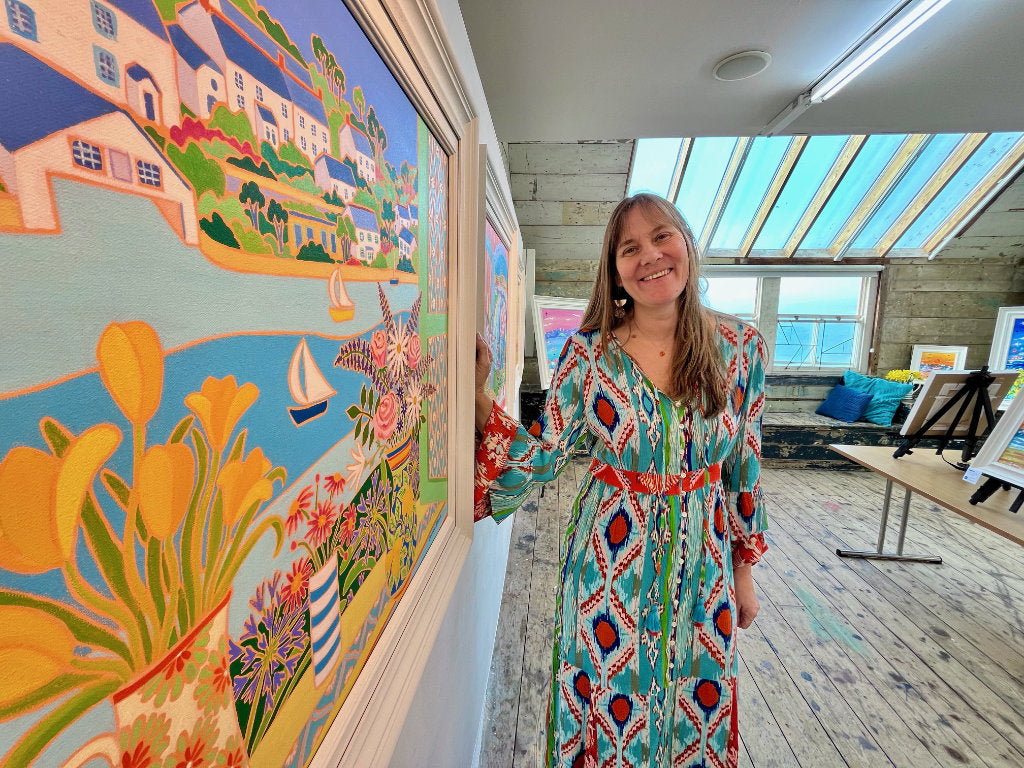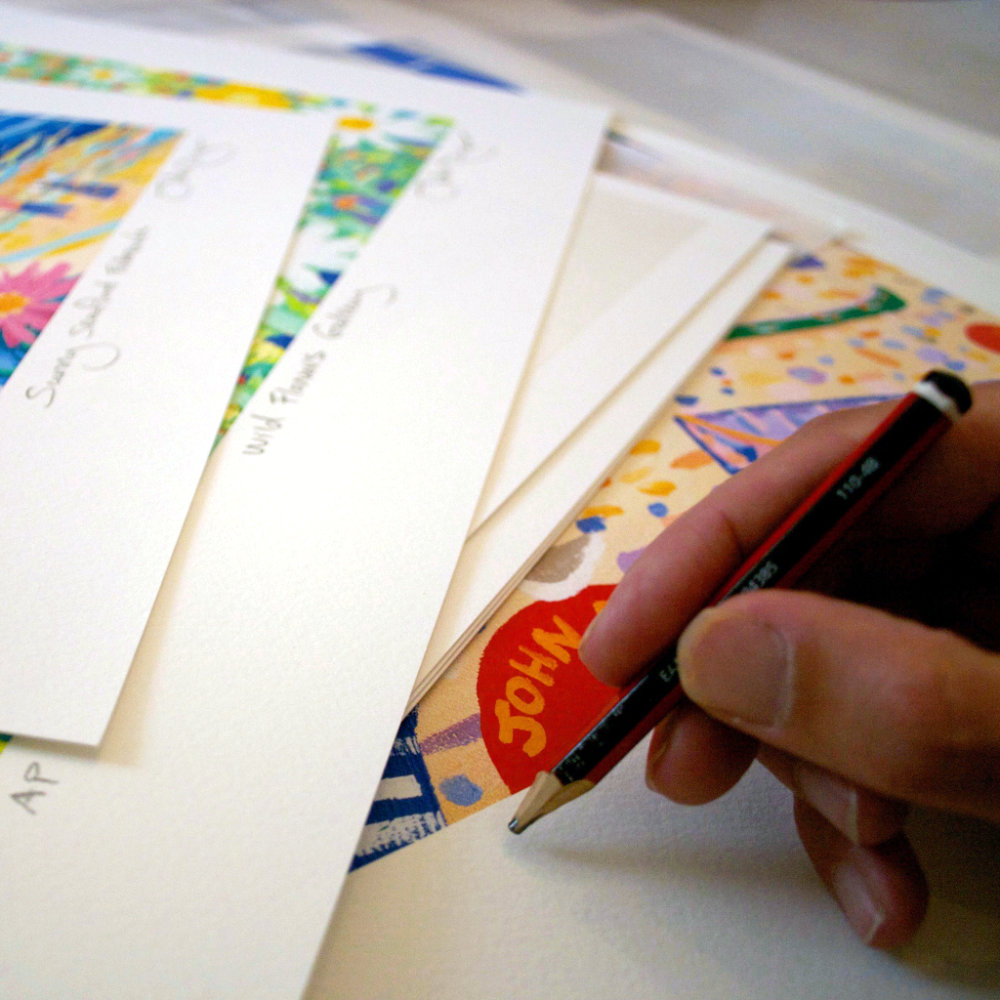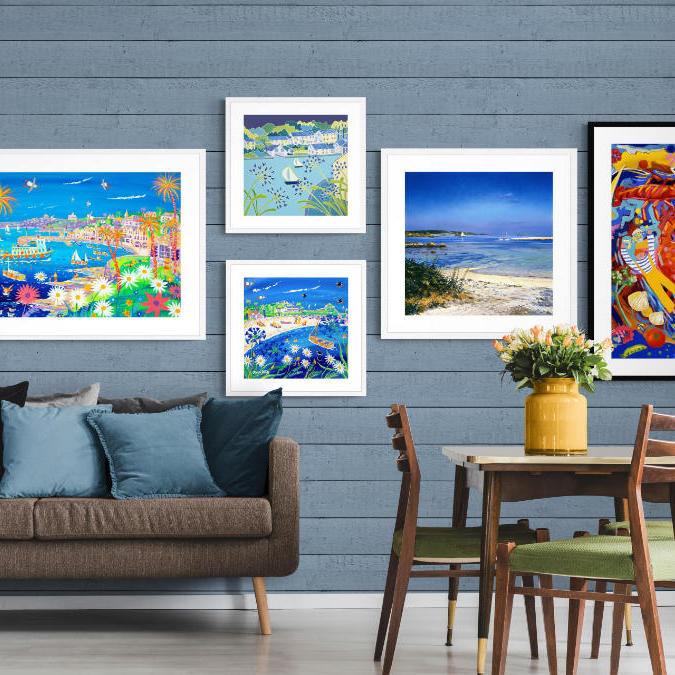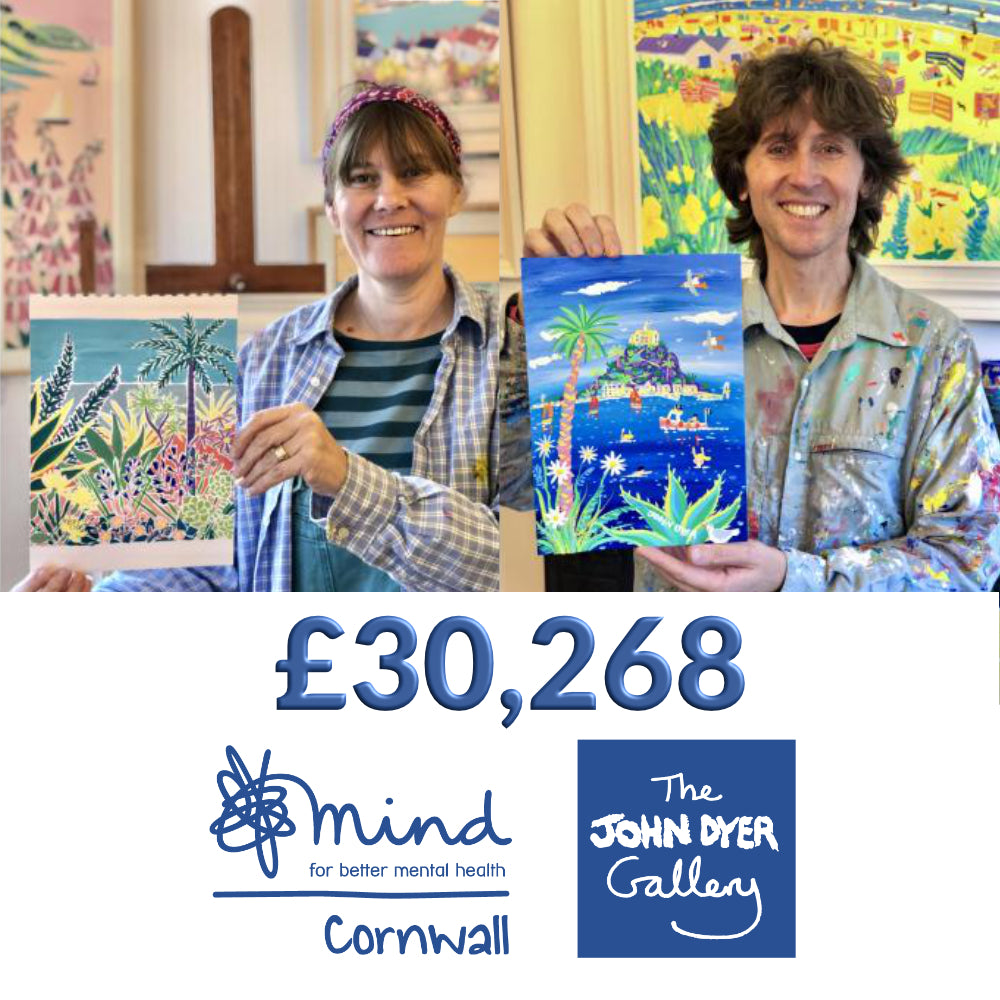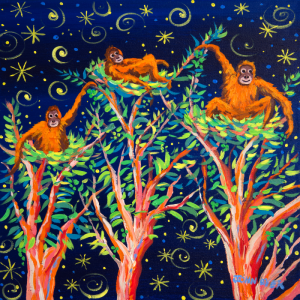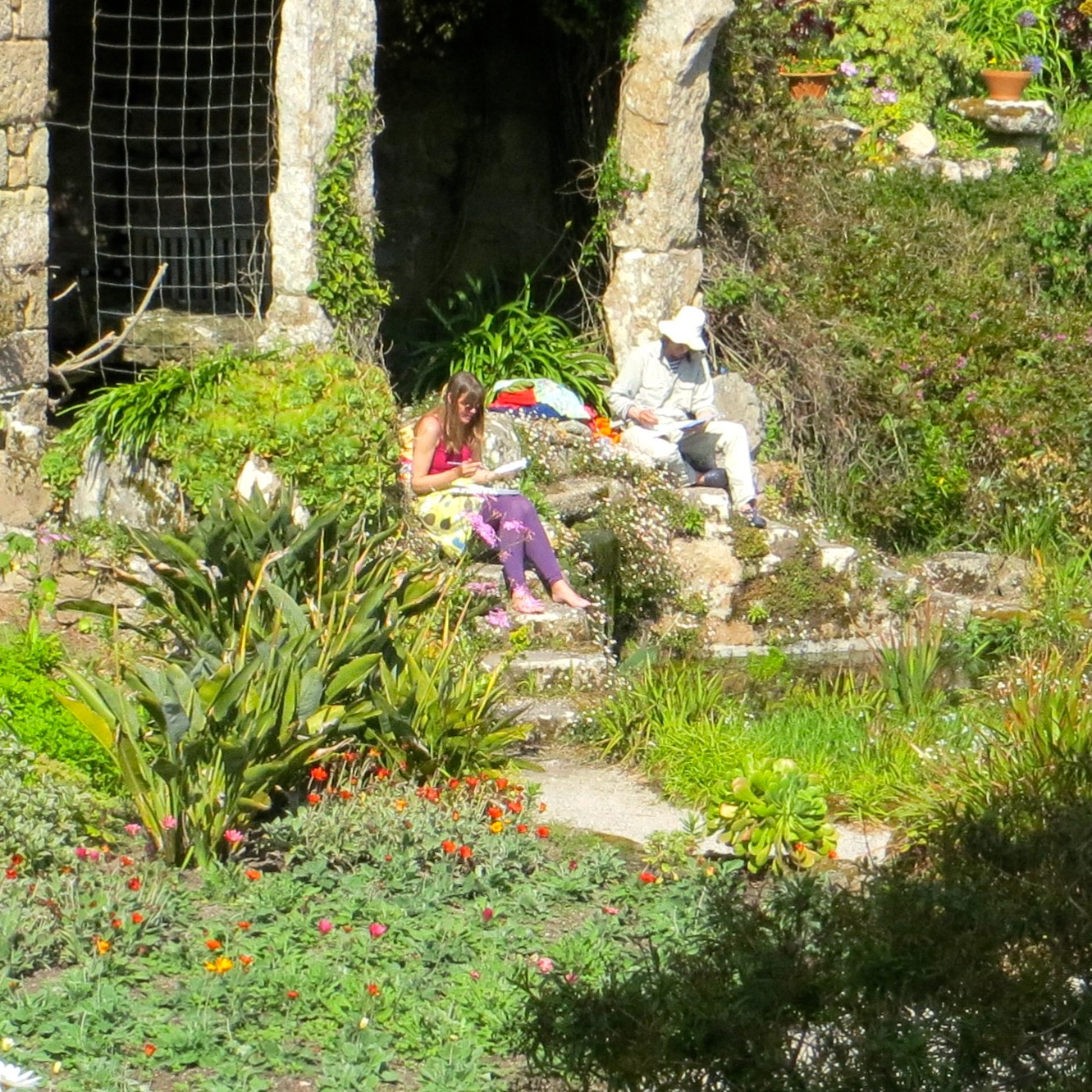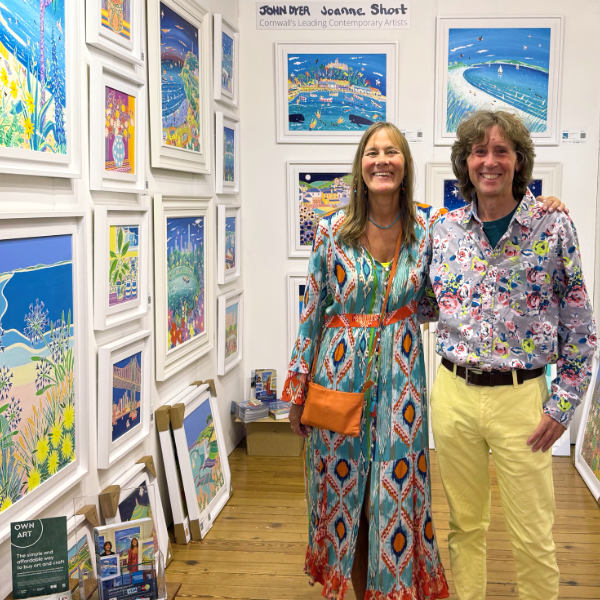
The Eden Project have selected UK artist John Dyer as their official painter in residence.
John Dyer is the painter in residence for the Eden Project in Cornwall. John has worked with the project from the year 2000 to the present day and has not only recorded the planting of the biomes but has travelled across the world to study the plants in their natural habitats.
The Eden Project have used John's work to help to tell their 'plant people' stories and a major exhibition was held for world food day in October 2002 of his italian crop paintings.
John's work continues with Eden as he works towards his 'Crops Project' exhibition. And in 2004 John exhibited 'Rice is Life' at the project.
"Working as a 'Painter in Residence' at the Eden Project has given John an unprecedented insight into the project and the people who made it happen. Working at Watering Lane Nursery and the Biomes at Eden since November 2000 John has had a unique painting experience."
The Eden Project.
John's work is pure painted joy -unbuttoned, jumping up-and-down, salty, earthy, laugh-out-loud, natural energy. His pictures make you want to touch felty leaves, squeeze fat fruit, push your nose into flowers and breathe deeply. It's no surprise that his paintings are popular the world over; whether he is painting a vineyard in Provence, the Humid Tropics at Eden, or docks and beaches in his own native Falmouth, he touches a very human need - the innocent thirst for light, pattern and colour. We sense in John's paintings the sheer human thrill of being alive... It has been an absolute delight hosting him at Eden, he has charmed staff and public alike with his interest and enthusiasm. We look forward to his next adventures in paint at Eden - in Chile perhaps, or Steppe, or before too long in a new Desert Biome?
Sue Hill Art Director, Eden Project
“In 1989/90 I was lucky enough to win a travelling bursary to the Amazon Rainforest courtesy of Thames Television. I spent three weeks photographing the Rainforest for an exhibition in London.
The experience made me change the way I was living and working. The first change that I made was to focus on painting rather than photography. The colours of the wooden buildings in the Amazonian towns and villages, the vibrant greens of the foliage and the tea coloured Amazon river gave me a desire to paint and to explore colour.
The second change was a sudden desire to return to Cornwall, the place that I had grown up in. When I returned to Cornwall after my experience of the Amazon I noticed what I had taken for granted for years. The plants growing in Cornwall, palms on the sea front, tree ferns and cactus mixed together in gardens, places like Trebah Gardens and The Lost Gardens of Heligan were being rediscovered. Taking a boat up Frenchman's Creek was a deja vu experience for me. Large fallen trees half submerged in the water, foliage tumbling down steep slopes, birds echoing in the undergrowth, this was as Amazonian as it got for me and I realised that Cornwall had it all.
I moved back to Falmouth and began to paint, and indulge in colour and shape. My Cornwall was tropical. Ten years on and the Millennium has arrived, together with the most exciting Millennium project in the country; The Eden Project.
Eden presented a chance for me to return to the Rainforest, this time with my paints instead of my camera. In November 2000 Sue Hill, the art director at The Eden Project offered me a painting residency, and began by showing me around Watering Lane Nursery. 20,000 plants are impressive, especially when they are being nurtured in a state of the art glasshouse. As the door to the glasshouse slid open it was like stepping off the plane in Santarem, Brazil. Rows and rows of specimen plants from West Africa, Amazonia and Oceania stood waiting to be inspected. Papaya trees covered in fruit, Balsa trees almost getting bigger before my eyes,Cheese plants everywhere, Palms, Oranges, Lemons, Cacti, Sugar Cane and plants of all shapes and sizes.
The atmosphere at Watering Lane is very calm, the smell of the plants in flower and the dampness of the earth floor creates a soothing experience. A small team of people continually tend the plants, moving them around the glass houses, checking for pests, watering, sweeping and during my time at Watering Lane there was a continuous stream of plants being loaded onto vans to be taken to Eden.
Each time I return there are new wonders to see as the plants change. Everybody that I have met during my time at Watering Lane has their own personal favourite plant of the moment, 'have you seen the...., oh you really must have a look at...' and off they would dash with me in hot pursuit to see another wonder from Eden.
My first visit to the Biomes at Eden was during December 2000. Having completed the necessary health and safety induction I put on my hard hat and was taken from the atrocious winter weather and arrived in the steamy tropical atmosphere of West Africa, at the very top of the Humid Tropics Biome. I had arrived at Eden. I looked down through the Biome towards an oasis of palm trees planted next to a lagoon surrounded by earth moving equipment and tiny people. The whole scene resembled a gigantic set from a James Bond film; teams of people busily working in fluorescent jackets and colour coded hard hats, electric buggies ferrying plants and people through the Biome. But this was something quite different from Bond, this was real. This was amazing.
During January and February 2001 I regularly painted in the Biomes at Eden. The experience always had a filmic feel to it to; driven down into the pit in the back of a van, hard hat and jacket with 'Eden Project' emblazoned on them ready for action. The entrance to the Humid Tropics Biome for me was through vast pneumatic doors that concertina and seal shut after you like an airlock on a spaceship. If we ever colonise the moon then look no further than Eden for a glimpse of that future. Easel, paints and board safely loaded into an electric buggy I would be driven slowly up through the quarry from continent to continent, past impossible feats of daring as plants were being pushed and planted on almost vertical rock faces, and then I would be left in a quiet area to watch all of the activity during the day.
The myriad of leaf shapes, twisted stems, prehistoric thorns and jewel like tropical flowers surrounded by busy people pushing wheel barrows, moving soil, and carrying enormous plants has provided a truly exciting subject for me. As I painted I was gently steamed, and if the sun came out and started to track across the pit I start to boil. I was considerably over dressed on my first painting trip to Eden !
The Eden Project is a showcase for nature and exists not only to entertain but more importantly to educate and remind us to respect the natural world and the plant life in it. I hope that my paintings, in some way, will reinforce Eden's message of how marvellous nature is and help to create a sense that this must be conserved for us all. I am an optimist and try to focus this in my work.
I have found The Eden Project to be a very positive experience and I hope this is reflected in my paintings. To be associated with The Eden Project and to have been allowed to paint during the birth of Eden has been a real privilege for me and I am looking forward to watching Eden grow and establish itself as a true wonder of the world.”
John Dyer 2001

